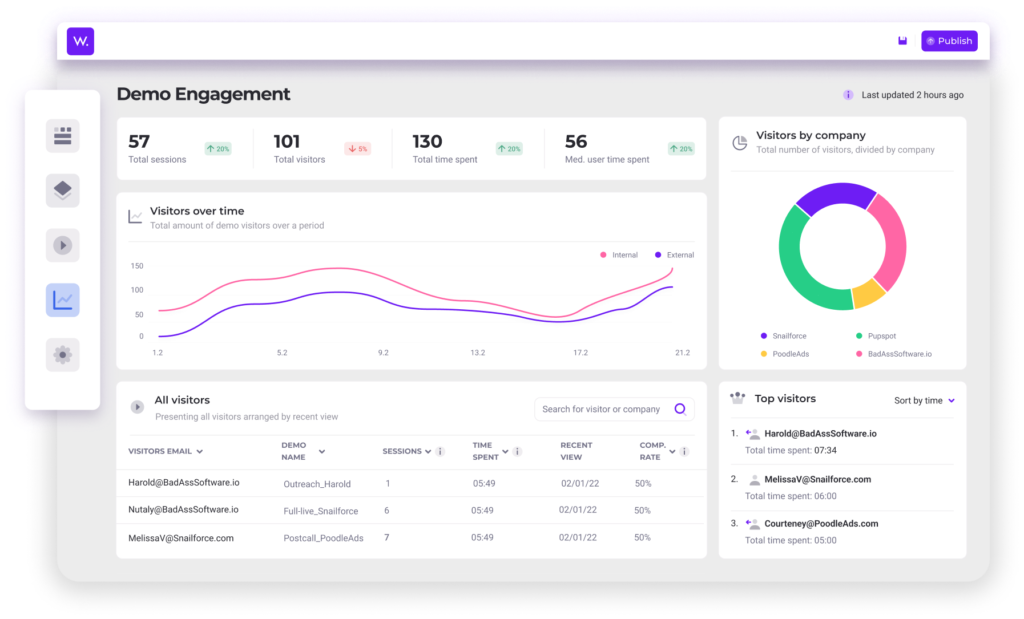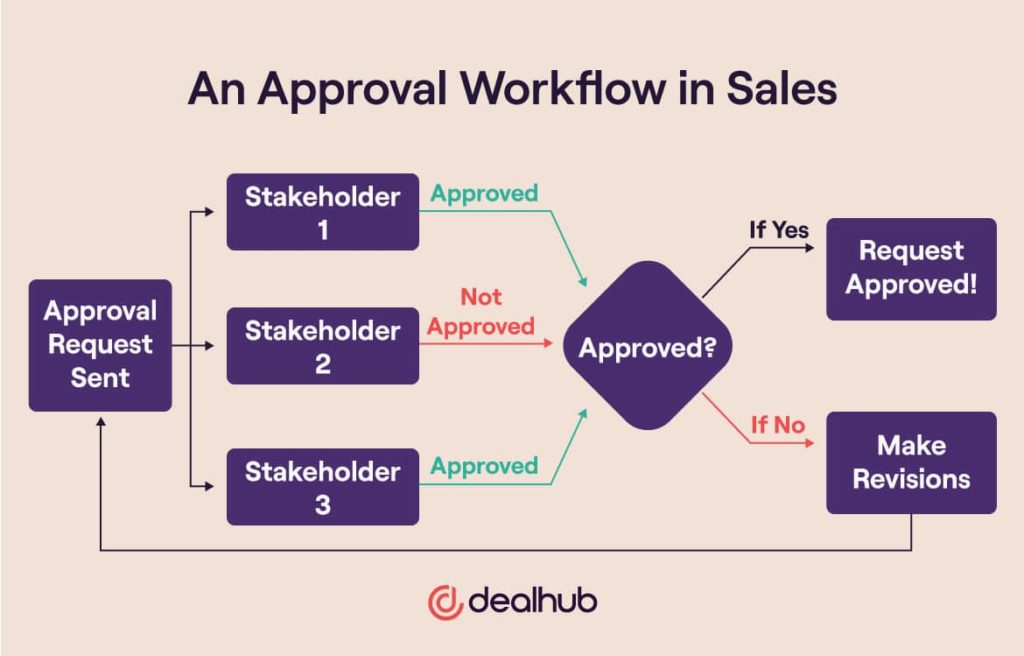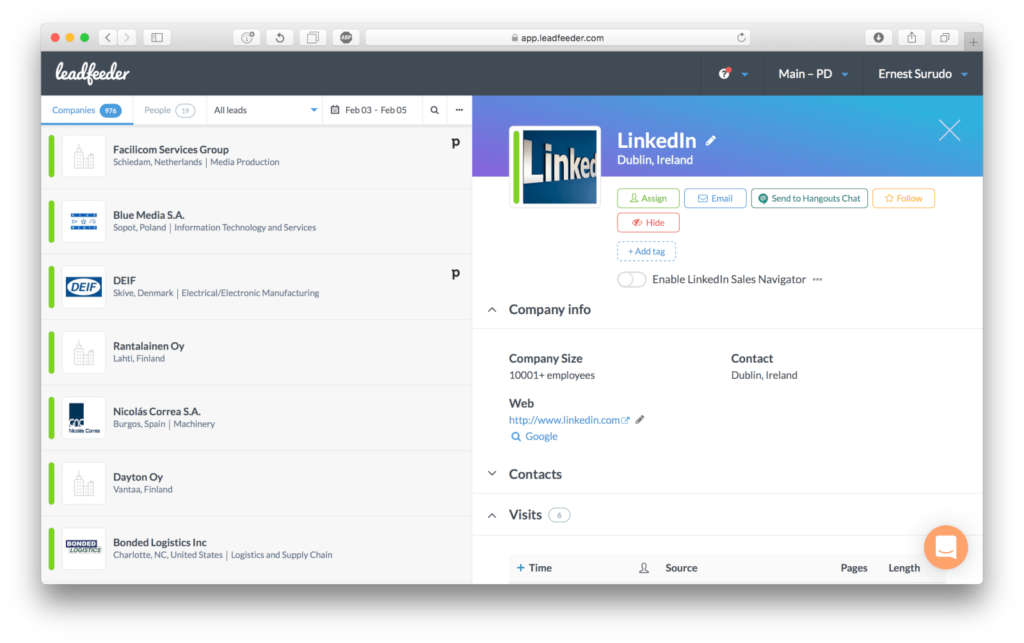MARKETING
Four Sales Tools To Use During This Economic Downturn

When the economy is making all of us nervous, we start looking for ways to make the most of every click and every lead.
Here are the tools that help you close more sales by utilizing your current tricks and contacts, i.e. without investing more in marketing:
1. Walnut.io: Make the Most of Your Product Demos
Product demos are the most powerful sales tools. But they are also the most challenging tools because they often require design skills and live presentations. The result is often unpredictable making it difficult to identify what went wrong with different prospects and how to improve your process.
Walnut is an innovative tool that helps sales reps create personalized and interactive product demos that close deals.
Its key features include:
- Create personalized and engaging product demonstrations for each prospect.
- Put together ready-to-go product demo templates by use case that are quick to reuse and publicize.
- Guide prospects easily with interactive annotations.
- Use built-in analytics to identify what works well and where you are losing sales.
- Work faster by integrating all your demo data with your CRM.

In a nutshell, Walnut allows you to increase product demo conversions. It makes your tool more productive by allowing them to reuse demos and focus on what works. It also makes it easier to convince larger decision making units because you can send all your prospects a link to an interactive demo that will help them understand your product value proposition.
2. DealHub: Make the Most of Every Lead or Prospect
DealHub is a deal acceleration platform that helps sales teams sell more with the help of smart technology. It offers tools that make it easier to generate proposals and quotes, and helps teams stay organized and connected, all while syncing data with your Salesforce or HubSpot CRM.
While other Configure Price Quote (CPQ) solutions require extensive coding and ongoing maintenance, GealHub can be easily configured using code-free settings, to ensure everyone on your sales team gets what they need out of it. The platform also includes tools to help teams analyze and understand the sales process and customer behavior.
All of this is designed to help teams be more efficient and productive, and to give buyers a better experience.
DealHub’s key features are:
- Guided Selling Playbooks are tools that help salespeople create accurate quotes, sales materials, and legal contracts.
- Contract Lifecycle Management helps manage contracts, their progress, as well as handle electronic signatures and storage.
- DealRooms are virtual spaces where buyers and sellers can work on deals, and see each other’s actions in real-time.
- The Sales Workspace is a place where sales teams can see their own completed and outstanding tasks, as well as analytics (what works well and what yields no results) all in one place.
- The Open Data Platform makes it easy to connect with other sales tools and share data.
Dealhub makes it easy to work with large decision making units and adjust your process to each stakeholder.

DealHub is a sales tool that helps teams work more smoothly and efficiently. It helps leaders connect with their teams and manage sales pipelines, all the way through to e-signatures and subscription billing payments. DealHub also helps teams keep track of interactions with leads and stay organized throughout the whole sales process.
3. Nextiva
Cross-platform marketing automation software allows you to track the behavior of your visitors. You know, of course, that not everyone who visits your website is ready to do business.
But there’s no way to know just how interested (or disinterested) they are unless you have at disposal a tool that points out the content they have consumed on the website, the resources they have downloaded, the number of newsletters they have subscribed to, how often they have visited the website, and how many times have they checked out your products/services in earnest (by going all the way to the check-out page).
Your leads may be at various stages of buying, but with access to the data points listed above, you will be able to send targeted messages to them depending on where they are and the next steps that you want them to take. Carefully crafted emails, content experiences and social media messages can be compelling and give them just the nudge needed to make a purchase!
Nextiva is a smart platform for businesses of all sizes to capture and convert leads. Nextiva is at the top of their game with software that promises to help businesses manage leads and market to them in a targeted and structured way across channels.
So much of marketing is about nurturing leads and keeping them interested season after season as they keep visiting your website. Some might never make a purchase. Others might be waiting for the right moment.
With Nextiva, you can attract the right customers and keep them engaged. Its SEO tool analyzes the performance of your existing keywords and recommends more competitive ones to improve your web ranking. Its “engagement platform” helps you collect rich customer behavior data, which can be integrated with social media platforms to create targeted ads.
Nextiva also helps you engage visitors with personalized content (based on their browsing behavior and data derived from the visitors’ location) to keep them interested.
If you’re emphasizing account-based marketing (ABM) practices, you can even manually create an audience segment of VIP leads from your email list and surface different content experiences to people visiting your site from these companies.

With the help of a tool like Nextiva, you gain insights into the behavior of your visitors/customers, zero in on the right ones and send them personalized content, improve your Google search rankings (so that more of the relevant people can find you), and make social media an integral part of the marketing mix.
After all, it doesn’t matter how someone found you, as long as they have found you and are interested in your website. Your marketing efforts should be able to direct traffic to your website from whatever platforms (including social media channels) you have a presence on.
Nextiva has separately priced plans for their various services. You have to get in touch with them for pricing.
4. Leadfeeder: Turn Visitors into Leads
Leadfeeder is a specialized B2B automation tool that helps businesses weed out the time wasters and focus on promising leads – even when people who visit your site don’t opt in via any of your lead capture forms. This is one of the most effective organic B2B lead generations tools out there allowing you to make the most of your current positions.
Its integration with Google Analytics helps the tool glean data that is worth its weight in gold. Leadfeeder’s code isn’t slowing web pages down so it is perfect for speed optimization.
With Leadfeeder, you can find out exactly which businesses have visited your website, as well as the specific landing pages they visit and for how long. (If they are in your target demographic and have seen the product demo or checked out the pricing, you know a sales call might be in order).
Procuring details on these companies is easy and helps marketers qualify leads. Leadfeeder also offers lists of email addresses, as well as Facebook, Twitter, and LinkedIn profiles associated with people who work at these companies, so that your marketing team can organize contacts according to priority. Then, salespeople can warm up leads across channels and make calls to pitch when the time is right.

What makes Leadfeeder even more useful is its integration with a number of popular marketing tools, such as Salesforce, MailChimp, Zoho, Pipedrive and webCRM. With the help of Zapier, which Leadfeeder rolled out an integration with in late June, you can now push Leadfeeder data to hundreds of other platforms, like Google Sheets, AdRoll, Todoist, Slack, and several more CRMs.
Making your sales team more effective is the first step to increasing your ROI and surviving an economic crisis. I hope the tools above will help you close more sales and build a foundation for future success!




















You must be logged in to post a comment Login